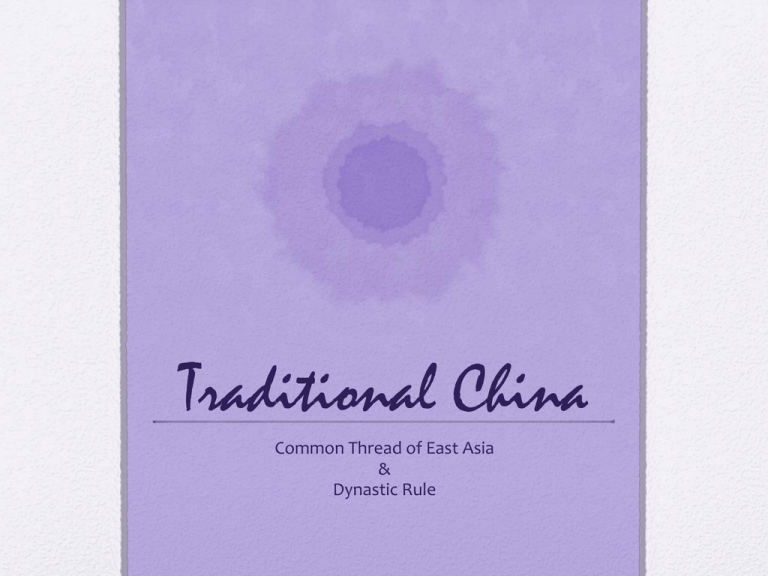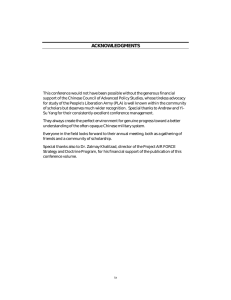Traditional China Common Thread of East Asia & Dynastic Rule
advertisement

Traditional China Common Thread of East Asia & Dynastic Rule China is one of the original world civilizations! Common Threads of East Asia In the 7th & 8th centuries A.D., China’s beliefs, writing system, philosophies, religions and technology spread to Japan, Korea, and Vietnam defining the area known as East Asia. Chinese writing system is called calligraphy. Subjugation of Women Women were restricted from most education (maybe knowledge of arts). Women’s role was to produce sons! Three growing seasons! Son’s carry on the name Daughters were expensive to marry off- dowry goes to new family. Son’s bring wife's and dowry into the family! Middle KingdomDynastic China •For years, until the late 1800s, the Chinese considered themselves the only truly civilized people on earth- the Middle Kingdom. They felt they needed nothing from the outside world and had nothing to learn from it. Middle Kingdom • China’s location helps to explain why the Chinese thought they lived at the center of the Earth. • Long ago distance and physical barriers limited contact between China and other centers of civilizations. (until the Silk Road) • Physical barriers that kept China isolated: •Gobi Desert, Mongolian and Tibetan plateaus, Himalaya Mountains and rainforest separated China from S. E. Asia. To the east lies the Pacific Ocean 5,000 years of Dynastic Rule in China • Dynasties, or ruling families, ruled over China from 2200 B.C. until 1911 A.D. • Chinese Emperor was considered to be the Son of heaven. • The Dynastic rulers were top of the social structure. Mandate of Heaven The Chinese believed that heaven granted a ruler the mandate, or right to rule. The people in return owed the ruler complete loyalty and obedience. • Emperor and the Dynastic family. Levels of Society • Gentry- about 5-10% of population. The gentry were the scholar elite; they held highest position in society. • Peasants/Farmers- majority of population: very important to society because they produce food- agriculture, not educated. • Artisans and merchantspeople who sell goods. • Slave girls are the last level of the social structure. Typically they are young girls sold as servant’s etc. Gentry Class Farmers & Peasants Han Dynasty Good Earth • For a majority of the people, peasants, life in China for thousands of years was very difficult. • Throughout Chinese history, they were plagued by famine. In traditional China, there was an average of a famine per year. • In more modern times, such as 1928-1930, one famine killed three to six million people.







